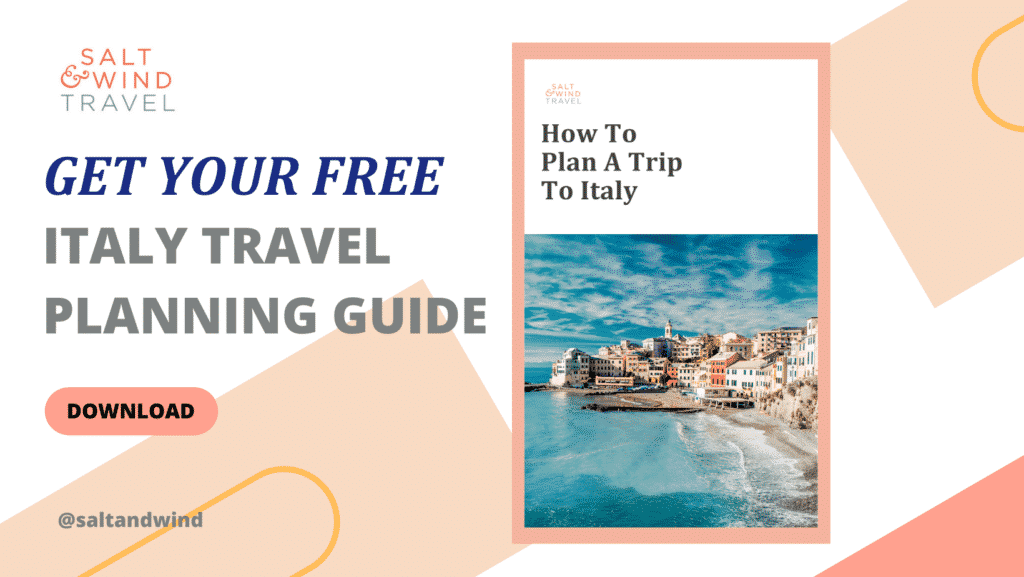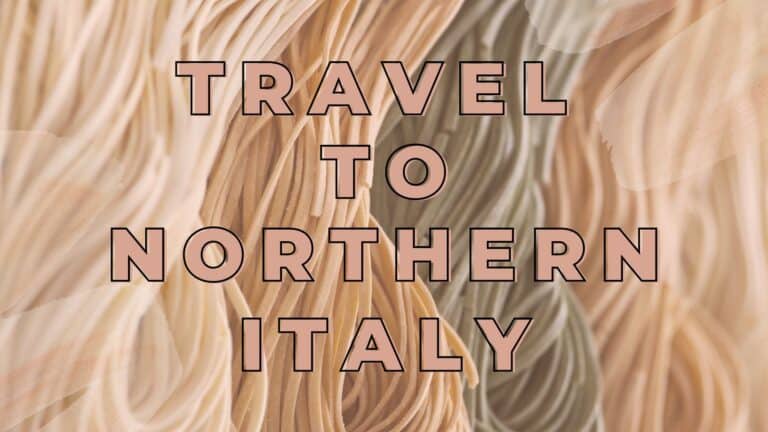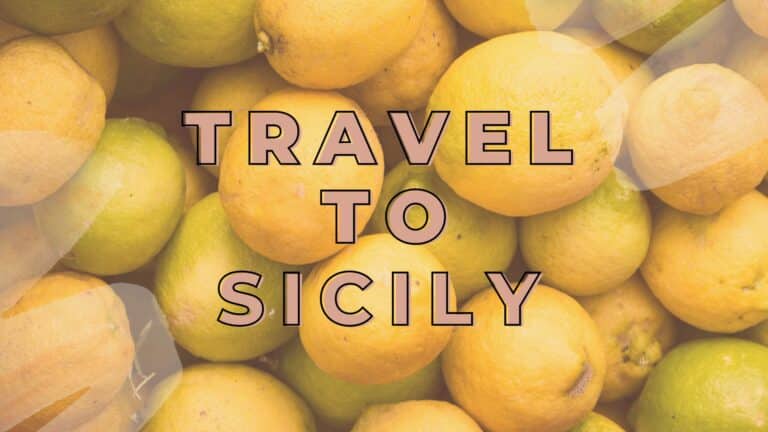Ciao, amici. Let the wanderlust abound; you’re traveling to Italy! As a food-first travel company, we at Salt & Wind Travel adore the “Bel Paese.” We seek destinations with a sense of place, vibrant food cultures, and creative local scenes. Italy checks those boxes while also having awesome architecture, rich history, and postcard-worthy panoramas, which is why it’s one of the places we help people as you travel in good taste.
Travel Planning Guide
For more than six years, we’ve worked as travel advisors to Italy and frankly, it’s one of our favorite things to do. We’ve created this guide to help you effortlessly plan a trip to Italy. Keep scrolling for the table of contents and to read all our travel tips. Or, for a PDF version, click here.
Whether it’s your first or your tenth time in Italy, start by deciding when to go. The winter is better for the Alpine ski resorts, the spring for road-tripping, the summer for beach time, and the fall for wine harvest. Then organize flights, lodging, activities, and, our favorite, where to eat and drink.
Join our free travel community to ask questions of fellow food and travel lovers. And, of course, if you need anything else, don’t hesitate to contact us so we can help you plan your trip to Italy.
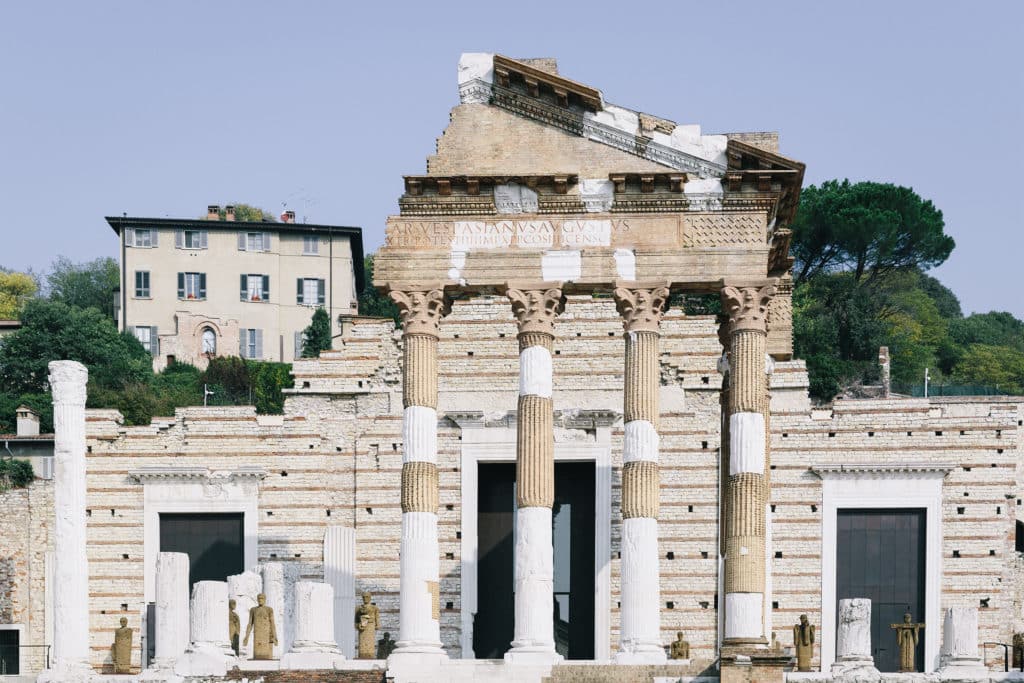
How To Plan A Trip To Italy
There are three general ways you can plan your trip to Italy — by deciding when, where, or what you want to do.
Where To Go vs. When To Go
That’s to say that winter traveling is better for indoor activities in the cities or alpine sports in the mountains. If you decide where to go first, ensure you travel there when the weather is good, and the crowds are fewer.
And, if you have a specific to-do on your bucket list, like mastering pasta in Bologna, attending a truffle festival in Piedmont, wine tasting on Mount Etna, or touring olive oil groves during harvest, then you’ll want to go around specific dates.
Planning Timeline
Ideally, you’d have at least 90 days to plan a trip to Italy, although it can be done in as short as 30 days. Book your flight and lodging now if you have 90 days or more. You’ll want to wait within a few months of travel to arrange ground transportation, be it train travel, private car, or rental car.
Aside from in-demand fine dining spots, you’ll want to book most restaurant reservations, museum tickets, and small group tours within the last six weeks before travel.
Questions To Ask Yourself
To get in the mind frame of how to plan a trip to Italy, ask yourself these questions:
Where do I want to splurge versus save?
Do I want to do all fine dining and high-end wine tastings? Do I want to stay in a luxury hotel at every stop? Or should it be a mix of a farm stay, a chic apartment, and some 5-star spots?
What is the goal of this vacation?
Are you aiming to see historic sights like the leaning tower of Pisa? Trying to check off something on the bucket list, like visiting Leonardo da Vinci’s Last Supper or boating on Lake Como? Or do you want a laid-back vacation where you stay put and relax?
Are there any activities, attractions, tours, tastings, or meals that are must-dos?
Think about what you can do on your own (i.e. an audio guide or self-led tour) versus experiences where paying a local expert will give you deeper knowledge or better access.
What pace do I want to travel?
Should it be all-systems-go every day? Or do I want room for exploring and playing things by ear? When planning a trip to Italy, give yourself a day or two to acclimate to the time zone and some leeway in case your flights are delayed or canceled.
What are my pet peeves in travel, and how do I avoid them?
This is a small bed or bathroom for some, while others hate crowds. Once you’ve got that all sorted, you can narrow in on the nature of your trip and start on how to plan a trip to Italy.
Get A Personalized Travel Itinerary
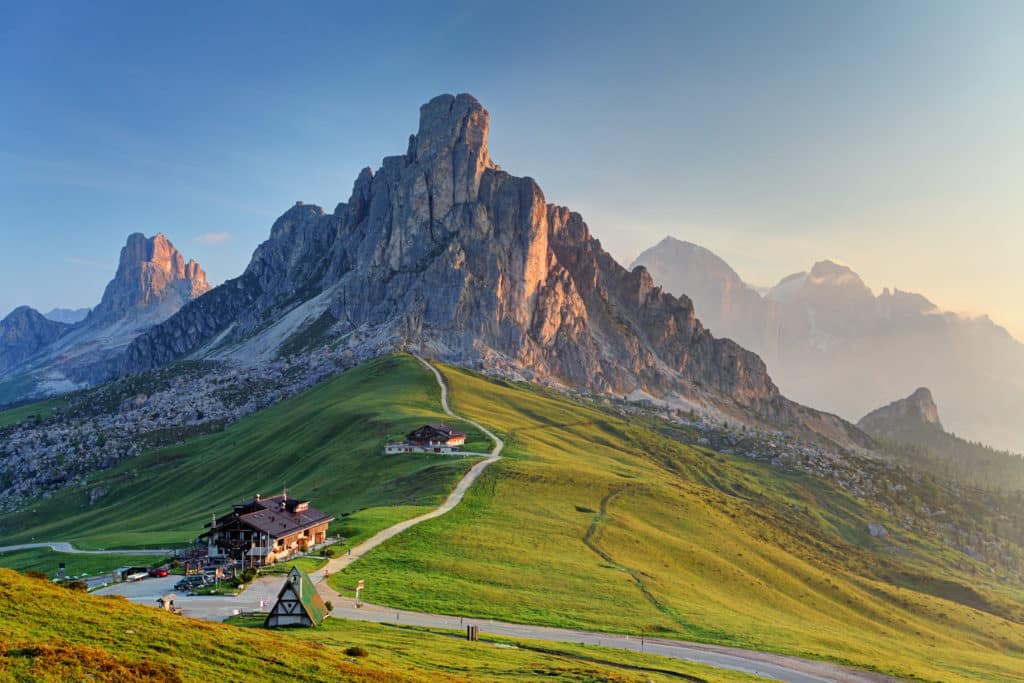
Best Time To Travel To Italy
The best time of year to travel to Italy depends on what you want to do.
The weather varies as you go from the wintery temperatures of the Alps to the balmy beach weather in Sicily. We’re fans of traveling to Italy during the shoulder season, generally April to June and September to November.
Avoid traveling to Italian cities in August when many businesses shut down for summer break and become virtual ghost towns. You’ll also want to account for any significant Italian holidays, whether Liberation Day, Ferragosto, or Christmas.
Here will get into the weather, the month-by-month events of note, the major holidays, and when to travel for your travel interests.
Best Times To Visit Italy By Interest
Salt & Wind Travel clients generally travel to eat, be active, or relax.
For Cooking Classes
Classes are available year-round, but go when the ingredients you crave are in season. Say in fall for truffles, summer for tomatoes, or spring for artichokes.
For Wine Tasting
Go in the late spring to experience bud break or in August or September to witness the harvest.
To Road Trip
If where you’re going has inclimate weather (the Alps), make sure to plan to drive in Italy when roads are clearer.
For The Beach
The beach season in Italy runs from Easter until mid-September. Outside of this, there may be bad weather, and many amenities shut down.
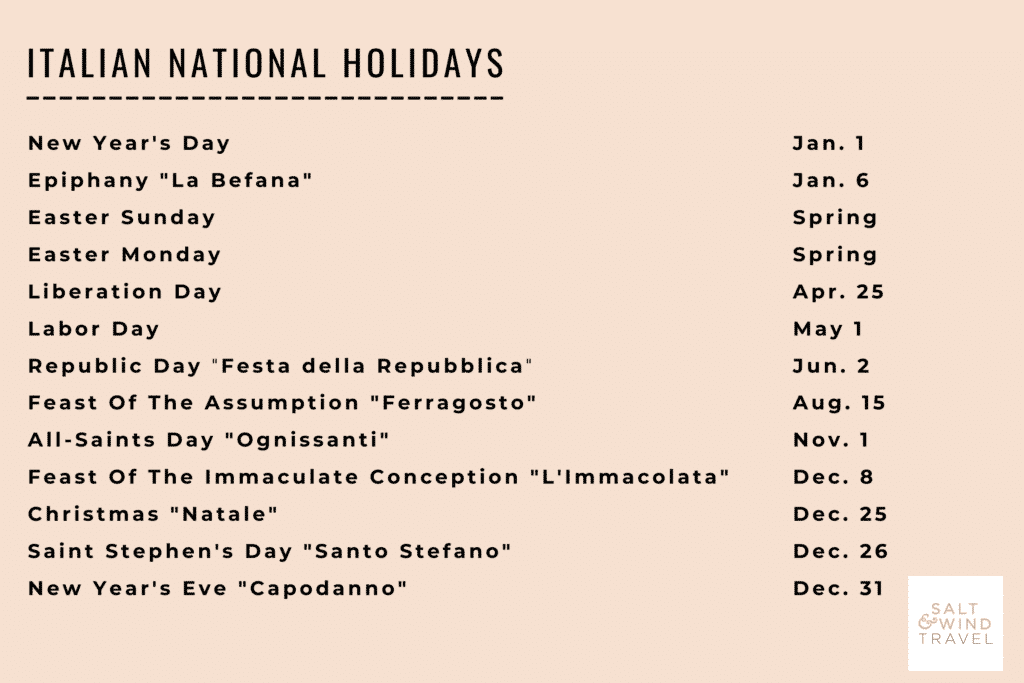
National Holidays
Most schools and public offices shut during major holidays, but you can read more specifics about each holiday and what is open here. When planning a trip to Italy, it’s worth noting that there are all sorts of regional holidays, from patron saint’s days to sagre or festivals in celebration of various harvests.
The low season runs from November to March, and prices can be more affordable, but the weather can be bad. Shoulder season runs in Spring and early Fall and is our favorite time. The high season is summer (especially mid-June to late August) when families head abroad, and prices are high.
By The Season
January – March
The weather can be bitter cold in the north, while the islands have cool days with sunshine.
April – June
Though it can still be rainy and cloudy, many festivals occur, and local produce comes into the markets.
July – August
The weather can be unbearably humid and hot, and crowds in the major cities, but the beaches are lovely though busy.
September – October
Our favorite time, there is generally good weather and lots of festivals.
November – December
The holiday season is incredible, but the weather can be cold, especially in the north.
Travel By Region
Piedmont
Situated in Northwest Italy near the Alps, Piedmont is one of the colder regions. It has a frigid winter, but we adore it from summer through fall when mild and sunny temperatures.
Lombardy
Sandwiched between the Alps and the Po River, this Northern region experiences a notoriously dense fog in the colder months. Aside from that, Lombardy has relatively temperate weather. Our favorite time of year is late Spring and early Fall.
Veneto
Of all the regions in Italy, Venice has been the hardest hit by over-tourism. There are shoulder-to-shoulder crowds in the center of Venice during the high season, so we encourage you to avoid that time of year. We suggest a day trip to Venice and then exploring other gems in the region like Prosecco wine country, Verona, Padua, and Cortina d’Ampezzo.
Emilia-Romagna
This region has relatively fewer travelers, so you can go pretty much any time of year. The weather is best during the shoulder season.
Tuscany
The weather in Tuscany is similar to that of Washington DC in that there are four seasons, but it doesn’t usually get a lot of snow. The spring and fall are incredible, but the summer can be very humid unless you’re at the seaside.
Lazio
Between the capital city of Rome and the Vatican, the region of Lazio always has a lot of travelers. The climate is similar to Portland, with four seasons, but the temperatures are never all that extreme aside from July and August when it can get scorching.
Sicily
The weather is nice in Sicily year-round though they get rainstorms in the summer and winter. The summer can be muggy and hot, especially if you’re inland. Go in spring when flowers are blooming from Noto to Taormina!
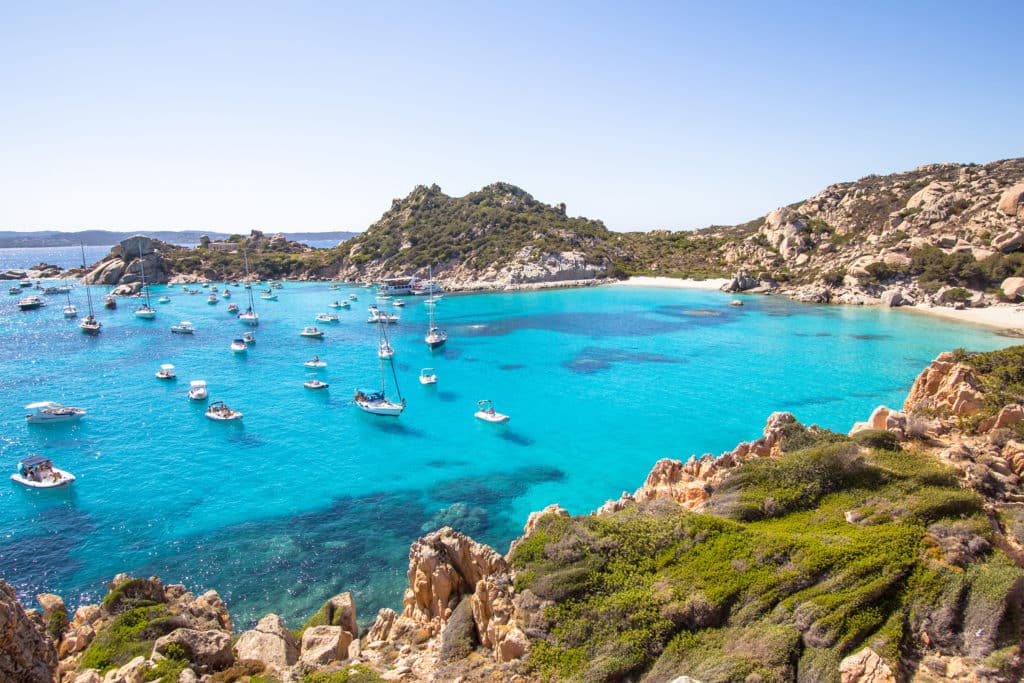
Where To Go In Italy
The top mistake our travel advisory clients make when considering how to plan a trip to Italy? They don’t budget enough time. The country is nearly the size of California, with a ton of culture and biodiversity, so there is a LOT to see. We suggest a trip be a minimum of 10 days and plan to book at least four nights in major cities and two nights in smaller towns.
The second mistake is that people only go to big cities. Italy is a young country and was a collection of city-states until unification in the mid-19th century. That means there is a lot of cultural diversity across the various towns, and it’s well worth seeing. The best way to get to know Italy is to visit a mix of cities and small towns.
Our Top Italy Itineraries
Here are our tops spots to add to your bucket list when you plan a trip to Italy.
Eternal Rome
The classic city is a must-visit for first-time travelers so that you can experience must-see sights like the Colosseum, Vatican Museums, and Trevi fountain for yourself. But, if you’ve been before, plan to visit again because, like in New York, there is always something new, be it an up-and-coming neighborhood or a new food trend.
Renaissance Florence
The most-adored of the bigger cities, the art, and history are significant. Go for tradition and a taste of Italian preppy life. Dive into some of the top things to do in Florence for food lovers. Then spend time in in the Tuscan countryside of Siena or Pienza. Or do a weekend in Maremma, Livorno, or Forte dei Marmi.
Chic Lombardy
Milan’s wealthiest region and center of Italian banking and fashion is fully saturated. We go to Lakes Como and Garda on group trips and visit the Franciacorta wine region. But we also adore day-tripping to Sirmione.
Wine Fanatic’s Piedmont
Food and wine lovers flock to Piedmont for its storied cocktail culture, celebrated wines (from Barolo to Barbaresco), and specialty foods like tajarin, hazelnuts, chocolate, and truffles.
Trekking The Dolomites
The pink-tinged, jagged granite Dolomites are what outdoor lovers dream of tackling. Hike the wildflower-clad mountains in the spring or ski the fabled, glamorous resort of Cortina d’Ampezzo before it gets on everyone’s radar when it’s home to the 2026 winter Olympics.
Food Lover’s Emilia Romagna
Tied with Piedmont as the most food-focused region, the capital, Bologna, is known as the fat one or “La Grassa” because it is home to dishes like mortadella, tortellini, and lasagne Verde. Also, head to Modena for balsamic vinegar and Parma, home to Parmigiano-Reggiano and prosciutto.
Natural Wine Umbria
If natural wine is your main sipper, head to Umbria, where several producers are making their mark in the low-intervention world.
Seaside In Naples & Amalfi Coast
Start your trip in the bustling, boisterous maze of streets that make up old Naples, and take a day to explore Pompeii. Then clock in some time on the sea with a day trip to Ischia, Procida, or Capri and relax in one of the cliffside towns of the Amalfi Coast from Sorrento to Positano.
Beach Time In Sardinia
From star-studded sandy beaches to hidden teal coves, the island of Sardinia has a beach for everyone.
Food Lover’s Sicily
The island of Sicily has such incredible food and wine that various towns are celebrated for single ingredients, from the Bronte pistachios of Etna to the chocolate of Modica.
Where Not To Go
We agree that Venice and Cinque Terre are gorgeous, but they’re suffering from overtourism, so we’d suggest only making a day trip when you plan a trip to Italy.
Dive Deeper
Get even more advice on where to travel in Italy by reading where to travel based on your personality.
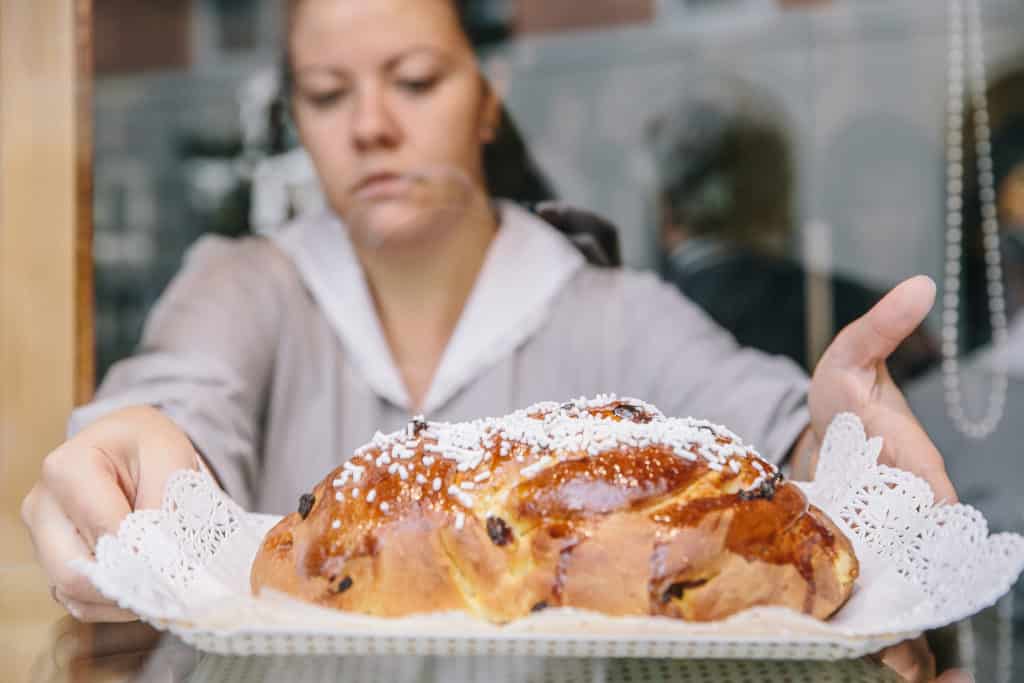
What To Eat
There is no “one” cuisine when it comes to Italian food. Instead, the various regional styles come together as the food we call “Italian.”
The country takes tremendous pride in preserving food traditions with groups like Slow Food. While you can find non-Italian food, from Chinese to Indian to plant-based options, classic Italian food reigns. Get to know the local food by visiting markets, doing street food tours, attending cooking classes, shopping at gourmet stores, and eating.
Before You Go
Before you set foot in Italy, you can learn its food traditions by cooking a few of the most iconic foods.
Ingredients From Italy
First, start by understanding which ingredients originally came from Italy. While you likely know artichoke is from there, you may be surprised to learn that tomatoes are not!
Pantry Essentials
Stock your pantry with iconic Italian ingredients to get to know classic flavors.
Top Recipes
Some recipes are transportive, including those we cook when we miss Italy. A few must-make iconic dishes (that happen to be some of the most popular recipes on the site) include:
What To Eat
Across the country, we insist you try foods, including bread, cheeses, olive oil, salami, pasta, and desserts. Then there are dishes and ingredients (truffles!) only found in certain areas.
Bread
Each region has a bread to call its own. Start by getting to know the types of focaccia.
Cheese
Parmigiano-Reggiano is the king of Italian cheeses, but make sure to try other styles of cheese like Asiago and Caciocavallo.
Dessert
Every region also has iconic desserts though we particularly love biscotti, budino, gelato, and cannoli.
Speaking of gelato, there’s a big difference in quality. Make sure you know how to choose which gelato is freshest and made with artisanal ingredients.
Difference In Italian Food
Each of Italy’s 20 regions has its food specialties. But you can generally distinguish between the North and South.
Northern Italian food has more “continental” flavors and ingredients akin to France and Germany, while Southern Italian food is more Mediterranean.
The Fat Line
An informal border across the country is known as the “fat line.” North of this line, just south of Milan, the predominant fat is butter, while olive oil is to the south.
Northern Vs. Southern Food
Southern Italy is generally about seafood, tomatoes, peppers, and olive oil. Historically, the north has been about the land, using ingredients like beef, veal, cream sauces, cheeses, eggs, and butter.
Top Food Regions
What To Eat In Piedmont
You already know the renowned liquors and wines from this area, like Nebbiolo, Barbera, Campari, and Vermouth, but Piedmont’s food deserves the hype, too. A few iconic dishes are agnolotti del plin, Baci di Dama, and gianduja. Read more about these iconic foods here.
What To Eat In Lombardy
This region is best known for Milan and the Lakes, but don’t sleep on the classic food. Dishes like risotto Milanese and cotoletta (aka Veal Milanese) come from there as do desserts like amaretti, torta sbrisolona, and panettone.
What To Eat In Tuscany
Though you can get incredible seafood at the beach, this region embraces the countryside with iconic dishes like Fagioli all’uccelletto, crostini al fegato, bistecca Fiorentina, and torta della nonna.
What To Eat In Bologna
If pasta, prosciutto, and Parmigiano-Reggiano are your faves, you’ll want to spend time in their home region of Emilia-Romagna. We insist you eat tortellini, lasagna, and much mortadella.
What To Eat In Rome
With a history dating back millennia, you’ll find rich dishes in Rome with an equally rich history. Try pizza Bianca, the cacio e Pepe pasta, and many artichokes.
What To Eat In Sicily
The agricultural riches of Sicily combined with its history— wherein cultures from the Greeks to the Arabs spent time there—means the island has a unique cuisine. You’ll find dishes that seem North African or Middle Eastern but are decidedly Sicilian, from caponata and sfincione to cassata and even lemon leaf meatballs.
How To Order Italian Food
Like everything else, we have thoughts about how to read an Italian menu and order food in Italy. Oh, and Italians take their coffee culture so seriously that we wrote a whole article just about coffee in Italy.
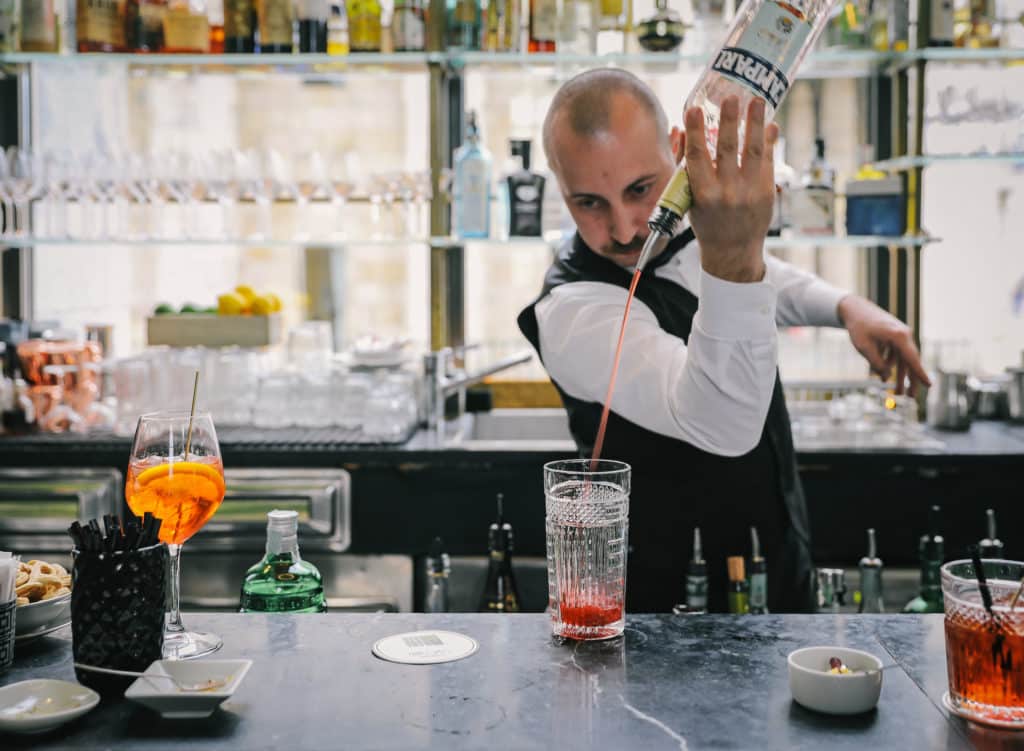
What To Drink
There is a lot to try when it comes to alcohol and Italy.
You’re probably well aware that the wine culture is one of the most diverse, but you may not know that the cocktail culture is as storied as that of the United States and that the craft beer scene is world-renowned.
Aperitivo
Dip into the Italian cocktail culture by doing aperitivo. Though it originated in Northern Italy, it is now standard across the country.
Craft Cocktails
Mixology has become major in the country, with bars like Drink Kong, 1930, and Camparino leading the way.
Craft Beer
The Italian craft brewing scene has come into its own and is putting Italy on the map in the beer world.
Wine
We get it: Italian wine can be confusing. And, it’s no surprise seeing as the country has the most known native grapes anywhere (roughly 2,000!).
The easiest way to get to know it all is to travel region by region and taste as you go.
Classic Italian Wine Regions
- Piedmont: For bubbles from Asti and high tannin, celebrated reds of Barolos.
- Lombardy: For the traditional method, sparkling wine from Franciacorta
- Veneto: For bold Amarone or bubbly Prosecco
- Emilia Romagna: For Lambrusco or Pignoletto
- Tuscany: For Chianti Classico and Sangiovese
- Umbria: For whites to love from Grechetto and Trebbiano varieties.
- Sicily: The Sicilian wines are as diverse as the topography, with everything from Marsala to cult organic reds.
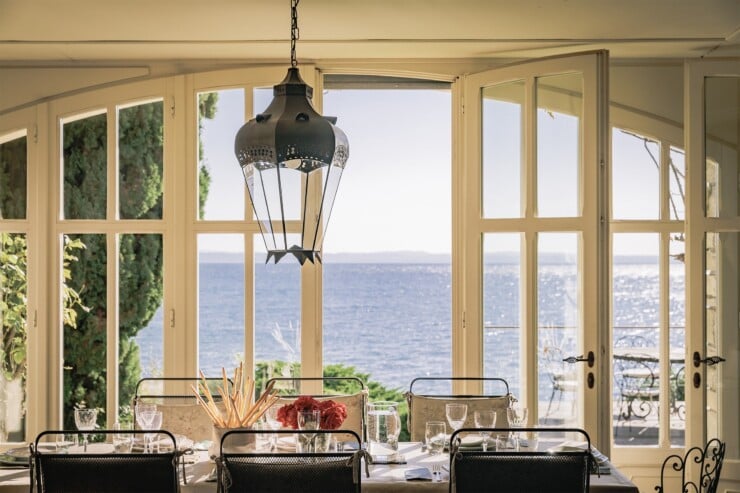
Italy Eating & Drinking Tips
Yes, part of the reason we’re dedicating a section to eating and drinking customs is that we’re a food-first travel company. But, also, it’s because there are some very specific things to know about dining before traveling to Italy. There are various labels for eating establishments, from bar to cafe and enoteca to taverna, and, traditionally, each indicates a different level of service and price.
Italian Dining Tips
We often get guests telling us they’re surprised by how rigid Italians can be about food. But, it’s understandable in a country where food is a part of their cultural DNA. Here are a few things about dining in Italy that surprise Americans.
Essential Eating Etiquette
We’re not trying to get fussy, but knowing a bit of etiquette will help a lot. Some are common stateside, while others, like using two spoons or a fork and spoon as serving “clips,” may not be familiar to you.
Avoid Having A Bad Meal
Yes, Italy’s food is generally well above par. But, seeing as it’s one of the most visited countries on the planet, you can come across tourist traps.
You’ll want to avoid spots with menus in many languages or with people who are trying to get you to come inside. Here are a few other ways to make sure you avoid a crappy meal.
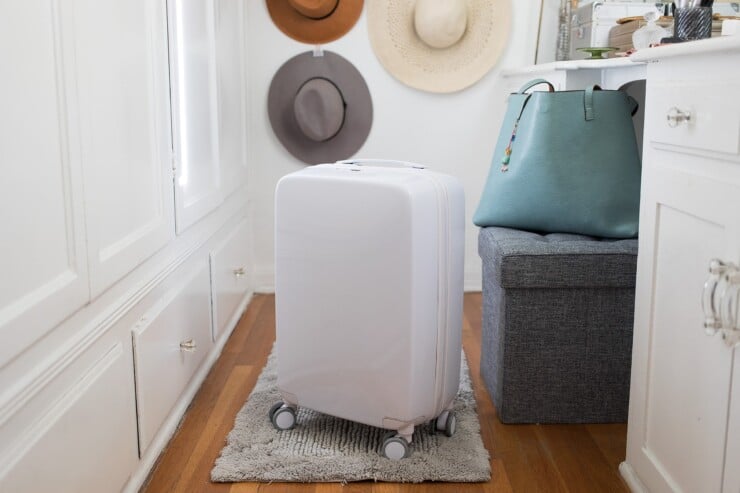
What To Pack For Italy
In general, there are a few travel essentials we won’t travel without. Head to our Amazon shop for all our must-have travel carry-on items. Read on for what to pack for Italy.
La Bella Figura
Italians live by the concept of “la Bella figura,” which means to present yourself (through everything from your manners to your clothing) in the best possible light.
While you don’t need to dress trendy, locals will appreciate it if you look your personal best.
Casual Chic
Italy has embraced a more casual style as of late, so you can wear jeans, walkable flats (preferably not running shoes), and a nice top almost everywhere. “Sophisticated-casual” attire is appropriate at most restaurants.
For men, we recommend collared shirts and slacks. For women, we suggest dresses, skirts, or dressy pants. Nice jeans are acceptable but do not wear shorts or sneakers to dinner.
Formal Vs. Informal
The Northern Italians and the Florentines in the major cities tend to be more formal and fashion-forward. (That goes for clothing and manners, by the way.)
As you go to the smaller towns, you’ll find people dressed in a refined, put-together manner but not necessarily fancy.
In summer, you can dress in more resort-type wear at the beach towns. In contrast, dress practically if you’re trekking through the Apennines or the Alps.
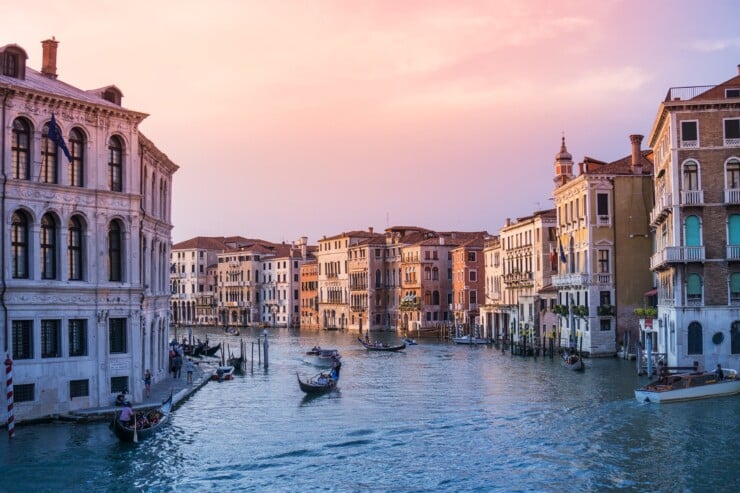
Essential Travel Tips
Passport
U.S. citizens traveling in and out of Italy must have a passport valid six months beyond the last day of their trip.
Travel Insurance
It’s not required by law, but we recommend having it whenever you’re traveling. Many credit cards (such as Chase Sapphire and AmEx) include travel insurance as part of a trip purchase so you can start there; however, they don’t usually cover medical emergencies. There are various services for providing comprehensive trip insurance, a few of which are Allianz, WorldNomads, and Travelex.
Dos and Don’ts
So long as you conduct yourself as you do at home, you should be golden. Here are some specific tips:
- Do learn a few words of Italian, as locals appreciate it!
- Do greet people. Say “Buongiorno” (or “Buonasera”)
- Do always have your I.D. on you (a photo of your passport is adequate) — it’s the law in Italy.
- Do be careful when crossing the street, as motorists often ignore crosswalks.
- Don’t be a jerk. Do drugs. Start fights—display public drunkenness. Urinate in public. Jump in fountains. Climbing on monuments. You get it.
- Don’t sit at a “bar” in Italy. When you go to a “bar” (whether it serves coffee or alcohol), you usually pay 2 to 3 times as much the minute you sit. Instead, stand at the bar as the locals do and save a few euros!
- Don’t buy anything from illegal street vendors. It’s illegal and if caught, you’ll be hit with a fine.
- Don’t eat food on the steps of churches, as it’s becoming a ticketable offense in many Italian cities.
Money
You’ll want to bring along money and credit cards (FYI, traveler’s checks are obsolete) — remember to call your credit card before traveling abroad to notify them of your travel plans.
ATMs
We recommend you pull out Euro at ATMs once you land in Europe instead of using a currency exchange service. Remember that your bank will charge you a fee each time you use the ATM, so it’s best to pull out the maximum amount of money each time you use it.
However, you can use credit cards in most places, so you shouldn’t need more than 100 Euros in cash at any time.
Credit Cards
This a reminder to let your credit cards know that you will be abroad before traveling. Also, many places in Europe will not accept American Express, so it is best always to have another type of credit card. Remember that chip credit cards (which you dip instead of swipe) are the norm in Europe, so it’ll be quicker to pay if you use a credit card with a chip.
Shopping & VAT Refunds
If you plan to do any significant amount of shopping, you’ll want to know about the VAT (called the IVA) tax. This value-added tax of 22% is added to almost anything. You can claim a refund if you spend more than €155 on any purchase. Remember, this only applies to purchases from retail outlets with a “Tax-Free” sign. Before you make your purchase, ask the vendor for a tax-refund voucher.
Driving In Italy
We generally find that driving in Italy on the highways is doable for most Americans, but driving inside cities can be overwhelming. And, we pretty much do not recommend you drive in the regions of the Amalfi Coast or most of Sicily as the drivers are aggressive and the roads windy.
Safety
All in all, Italy is a safe country to visit.
COVID
COVID has undoubtedly affected the country, and many rules are in place, so be sure to read up on restrictions.
Theft
The average issues travelers run into are bag-snatchers or pickpockets, so keep an eye on your valuables.
When traveling, there is always a possibility of theft. While enjoying the sights, remember to stay alert and be aware of your immediate surroundings, especially in crowded locations and tourist areas. Carry only the cash you need for the day and a copy of your passport on your phone, and leave the rest in a locked safe in your room.
For more safety tips, refer to U.S. State Department’s website at travel.state.gov
Emergency
Dial 112 in case of any general emergency.
Get Your Free Travel Planner
For a PDF version of this guide you can take with you, click here.
Have Us Plan Your Italy Trip
Looking to travel to Italy? Our travel planning services are here to help — head here to get started!
Photo Credit: Opening photo by RossHele
